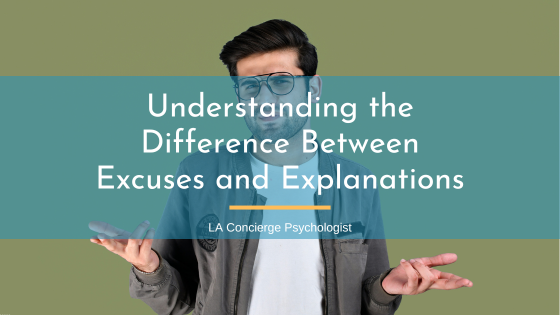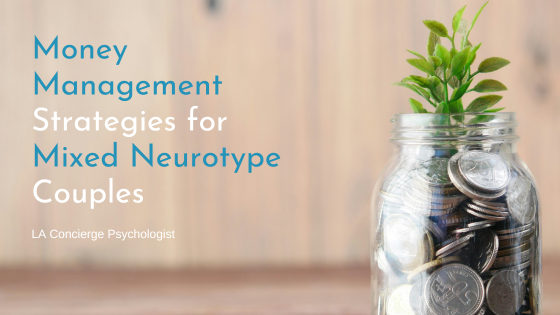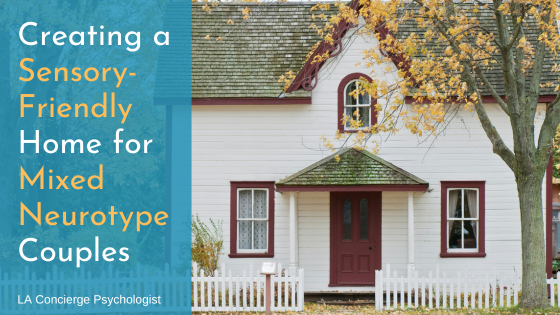As neurodivergent-affirming therapists, we’ve witnessed couples and families navigate the complexity of mixed neurotype relationships. One of the most common challenges involves navigating the dance between planning and spontaneity as a couple. This can be particularly difficult when partners, family members, or friends have different neurological wiring that influences their relationship with structure, routine, and unexpected changes.
The traditional approach to relationship counseling often pathologizes these differences, suggesting that one partner needs to “compromise” or “be more flexible.” However, neurodivergent-affirming therapy recognizes that these aren’t character flaws or stubborn behaviors; they’re fundamental differences in how our brains process information, manage energy, and navigate the world.
When we understand these differences through a lens of neurodiversity rather than deficiency, we can develop strategies that honor everyone’s needs while building stronger, more authentic connections.
The key lies not in forcing anyone to abandon their neurological needs, but in creating systems of communication and strategies that work for everyone involved. This requires moving beyond the neurotypical assumption that flexibility is always virtuous and rigidity is always problematic. Instead, we must recognize that predictability isn’t rigidity, it’s accessibility. Similarly, spontaneity isn’t irresponsibility; it’s often how some brains stay engaged and regulated. Here are some strategies to help you get started.
Managing Planning and Spontaneity in Neurotypical and ADHD Relationships
A neurotypical and ADHD relationship often centers around finding a balance between structure and flexibility. Neurotypical partners typically appreciate moderate planning and can adapt to changes with relative ease, while ADHD partners may experience planning as either overwhelming or constraining, yet struggle without some organizational framework.
The neurotypical brain generally processes routine tasks efficiently and can maintain focus on less stimulating activities for periods of time. This allows for steady progress on long-term goals and consistent follow-through on plans. However, neurotypical individuals may not fully understand the ADHD experience of executive dysfunction, time blindness, or the genuine difficulty of maintaining attention on unstimulating tasks.
ADHD brains operate differently; they may seem impulsive, often seeking novelty and stimulation to maintain engagement. What might appear as irresponsibility or lack of commitment is frequently the brain’s attempt to find the dopamine necessary for executive functioning. The ADHD partner may struggle with traditional planning methods not because they don’t care, but because their brain processes time, priorities, and attention differently.
Strategies for spontaneity and planning in ADHD and neurotypical relationships
- Flexible Structure Systems
Create planning frameworks that provide organization without rigidity. Use tools like color-coded calendars where certain types of activities are planned in advance (e.g., work commitments, family obligations) while carving out designated “flex time” for spontaneous activities. This gives the neurotypical partner the security of knowing major commitments are handled while providing the ADHD partner with built-in opportunities for novelty. - The 24-Hour Rule
Implement a system where major changes to established plans require 24 hours notice when possible, but minor adjustments can happen more freely. This helps the neurotypical partner mentally prepare for changes while acknowledging that ADHD brains sometimes need to pivot quickly when executive function shifts. - Interest-Based Planning
Leverage the ADHD tendency toward hyperfocus by building plans around genuine interests and passions. When the ADHD partner is engaged with the content of an activity, they’re more likely to maintain focus on the planning process. The neurotypical partner can support this by helping to connect routine tasks to larger, interesting goals. - Energy Mapping
Work together to identify the ADHD partner’s natural energy patterns and build plans accordingly. Schedule demanding tasks during high-energy periods and protect low-energy times for rest or low-stakes activities. The neurotypical partner can help maintain awareness of these patterns without becoming a “manager.” - Parallel Planning
Develop systems where both partners can plan in ways that work for their brains. The neurotypical partner might use traditional calendars and to-do lists, while the ADHD partner might use visual planning boards, apps with gamification, or body doubling sessions. Regular check-ins ensure both systems stay coordinated. - Spontaneity Budgets
Just as couples might have financial budgets, create “spontaneity budgets” that allocate time and energy for unplanned activities. This satisfies the ADHD need for novelty while giving the neurotypical partner predictability about when spontaneity might occur.
Managing Planning and Spontaneity in Neurotypical and Autistic Relationships
Neurotypical and autistic partnerships often navigate differences in how much advance notice and predictability each partner needs to feel comfortable and regulated. Autistic individuals typically require more detailed information about upcoming events, clear timelines, and minimal last-minute changes to maintain emotional regulation and executive function[1].
The autistic need for routine and predictability isn’t about being controlling or inflexible; it’s about creating the environmental conditions they need to live in a neuroformative world. When autistic individuals know what to expect, they can allocate their cognitive resources more efficiently, reduce anxiety, and engage more fully in activities and relationships.
Neurotypical partners may initially interpret requests for advance notice as excessive or restrictive, not understanding that for autistic individuals, uncertainty can be genuinely overwhelming. The neurotypical brain’s ability to “go with the flow” is a specific skill that shouldn’t be assumed to be universal.
Strategies for spontaneity and planning in autistic and neurotypical relationships
- Detailed Future Planning
Create comprehensive plans that include not just what will happen, but when, where, who will be involved, what to expect, and potential alternatives if things change. This might seem excessive to neurotypical individuals, but it provides crucial predictability for autistic partners. Use shared digital calendars with detailed notes about each event. - Change Protocols
Establish clear procedures for when changes to plans are necessary. This might include: explaining why the change is needed, providing as much advance notice as possible, offering choices when available, and acknowledging that the change might be difficult. Having a protocol reduces the distress of unexpected changes by making the change process itself predictable. - Routine Anchors
Identify core routines that remain stable even when other aspects of life change. These might be morning routines, weekly traditions, or bedtime practices. Protecting these anchor routines provides stability that makes other changes more manageable. - Information Front-Loading
Share information about plans, events, or changes as soon as it’s available, even if details aren’t finalized. Autistic partners often prefer having partial information early over complete information later. Create systems for updating information as it becomes available. - Sensory Considerations
Include sensory information in planning discussions. Will the event be loud, crowded, or in an unfamiliar environment? What accommodations might be needed? Planning for sensory needs prevents overwhelm and allows for better participation. - Recovery Time Planning
Build explicit recovery time into schedules after demanding social events, changes in routine, or high-stimulation activities. This isn’t being antisocial, it’s necessary self-care that allows autistic individuals to continue participating in shared activities long-term. - Visual Planning Tools
Use visual schedules, calendars with pictures, or other visual representations of plans. Many autistic individuals process visual information more easily than verbal descriptions alone.
Managing Planning and Spontaneity in Autistic and ADHD Relationships
When autistic and ADHD people get together, they often face what appears to be a fundamental contradiction: the autistic need for predictability meeting the ADHD need for novelty and flexibility. However, this combination can actually be beautifully complementary when both partners understand and respect each other’s neurological needs.
Both autism and ADHD involve executive function differences[2]; though, they manifest differently. Autistic individuals may excel at systematic planning but struggle with unexpected changes, while ADHD individuals may be excellent at creative problem-solving but struggle with consistent planning. Both may experience rejection-sensitive dysphoria, making it crucial that planning conflicts aren’t interpreted as personal rejection.
The key insight is that structure and novelty aren’t opposites; they can coexist when the structure is designed to accommodate change in predictable ways. Similarly, routine doesn’t have to mean boredom, and spontaneity doesn’t have to mean chaos. Many of the above strategies can be helpful for ADHD and autistic couples, as well as the more specific strategies below.
Strategies for spontaneity and planning in autistic and ADHD relationships
- Planned Spontaneity
Create frameworks that provide the predictability autistic partners need while building in designated spaces for the novelty ADHD partners crave. For example, establish that Tuesday evenings are “adventure nights” where the ADHD partner can suggest spontaneous activities within certain parameters (e.g., budget, location, duration). - Interest-Based Routines
Develop routines around shared special interests or hyperfixations. Both neurotypes often experience intense interests, and building routines around these can satisfy the autistic need for predictability while maintaining the ADHD partner’s engagement through genuine interest. - Change Notification Systems
Try detailed communication rules for when the ADHD partner needs to change plans. This might include: explaining the impulse or need driving the change, providing alternative options, giving as much notice as possible, and acknowledging the impact on the autistic partner. The predictability of this process can help make the content changes more manageable. - Parallel Processing
Recognize that both partners may need different amounts of time to process plans and changes. The autistic partner might need extended time to mentally prepare for activities, while the ADHD partner might need to avoid over-planning that leads to boredom. Create systems that accommodate both processing styles. - Energy Synchronization
Both neurotypes experience energy fluctuations, though for different reasons. Autistic individuals may need recovery time after social demands or sensory overwhelm, while ADHD individuals may have natural energy cycles related to dopamine and executive function. Map these patterns together to identify optimal times for planned activities versus spontaneous adventures. - Sensory-Friendly Spontaneity
Create opportunities for ADHD-driven spontaneity that remain within the autistic partner’s sensory and social comfort zones. This might mean having a list of pre-researched “spontaneous” activities that have been vetted for sensory accessibility. - Executive Function Support
Develop complementary systems where each partner supports the other’s executive function challenges. The autistic partner might help with systematic planning and detail management, while the ADHD partner might contribute creative problem-solving and adaptability when plans need adjustment.
Moving Forward Together In A Mixed Neurotype Relationship
The goal in mixed neurotype relationships isn’t to eliminate differences or force anyone to mask their natural behavior. Instead, it’s to create relationships where everyone’s neurological needs are understood, respected, and accommodated. This requires ongoing communication, creative problem-solving, and a fundamental shift away from viewing neurodivergent traits as problems to be solved.
Relationships can transform when partners move from trying to change each other to building systems that work for everyone involved. The planning-spontaneity balance becomes not a source of constant conflict, but an opportunity for unmasking, creative collaboration that leverages each person’s neurological strengths.
Remember that these strategies aren’t rigid rules; they’re starting points for conversations about what works for your specific relationship constellation. The most successful approaches are those developed collaboratively, with input from everyone involved, and adjusted over time as understanding deepens and circumstances change.
Get Support as a Mixed Neurotype Couple
Many mixed neurotype couples find that they benefit from couples therapy from a neurodivergent-affirming therapist who can help bridge any communication gaps and help them put helpful strategies in place.
If you’re struggling to implement these “brain hacks” and strategies for yourself or find yourselves becoming overly self-critical as you try to navigate them, consider enlisting professional support. Mixed neurotype relationships offer unique opportunities for growth, creativity, and mutual support, but can sometimes struggle with communication and connection.
As a neurodivergent affirming practice, we are skilled at helping bridge the communication gap. Send us a message to see how we can help or book a free 20-minute consultation call with Dr. Elizabeth Smith Han, our mixed neurotype couples therapist.



